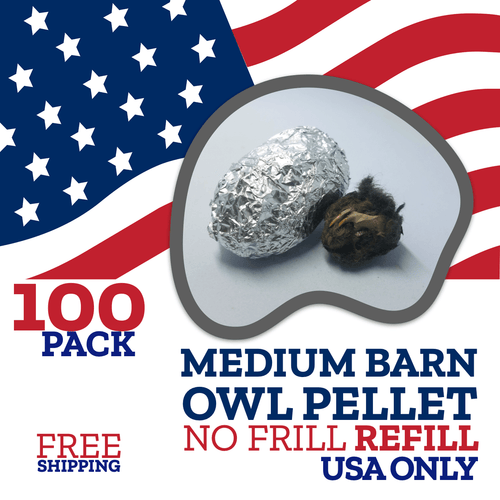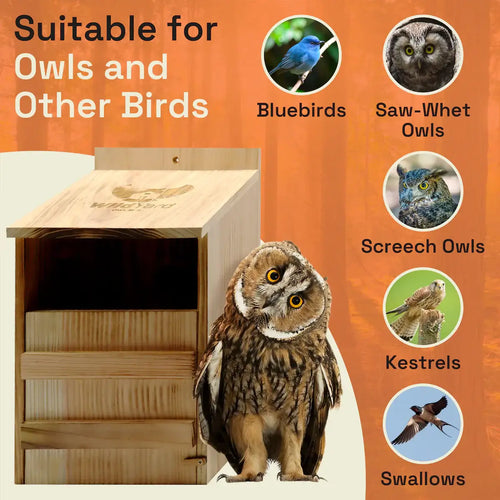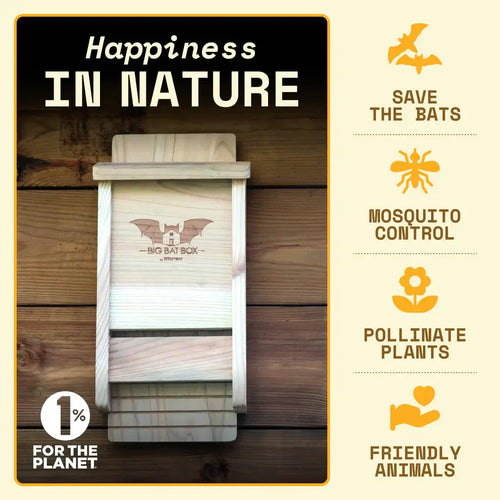No Products in the Cart
Nighttime Nature Heroes: How Owls & Bats Help Our Ecosystems (and Why They Need Us)

Silent Gardeners and Guardians of the Night
Whether it’s the soft swoop of an owl or the flutter of a bat at dusk, the night sky is full of quiet workers doing essential jobs. These animals may be easy to miss, but their ecological impact is enormous.
Bats are nature’s multitaskers
- Pollinators – Nectar-feeding bats carry pollen between flowers, helping tropical plants reproduce.
- Seed Dispersers – Fruit bats spread seeds across forests, supporting regrowth after deforestation.
- Pest Controllers – Insect-eating species consume staggering amounts of mosquitoes, moths, and agricultural pests.
Fun fact: A single bat colony can devour hundreds of tons of insects in a summer—naturally reducing pesticide use and keeping crops healthy.
Owls are nighttime pest managers
- Rodent Control Pros – One barn owl family can eat over 3,000 rodents in a single breeding season.
- Agricultural Allies – By targeting gophers, voles, and mice, owls help farmers protect crops without chemical pesticides.
- Quiet Hunters – Their nearly silent flight allows them to hunt efficiently without startling prey.
Together, bats and owls form a powerful ecological duo—one controlling insects, the other managing rodents—all while keeping ecosystems in balance.
What Would We Lose Without Them?
Imagine evenings without the swoop of an owl or the flutter of a bat. A world without these animals would mean:
- More mosquitoes and crop-damaging insects
- Exploding rodent populations
- Increased pesticide use
- Fewer pollinated plants
- Slower forest regeneration
In the U.S. alone, bats save farmers over $3 billion every year in pest control. Owls play a parallel role—especially barn owls, which farmers increasingly rely on as natural, chemical-free rodent control.
In tropical regions, bats support iconic crops like:
- Bananas
- Mangoes
- Dates
- Agave (hello, tequila!)
So the next time your students spot a winged silhouette at dusk, remind them: these are the night-shift conservationists keeping ecosystems—and agriculture—running smoothly.
Challenges Facing Owls & Bats Today
Despite their roles in ecosystem health, both groups face growing threats.
For Bats
- Habitat Loss: Roosting sites lost to development and deforestation
- White-Nose Syndrome: A deadly fungal disease disrupting hibernation
- Wind Turbines: Fast blades can injure migrating bats
- Misinformation: Myths and fear-based reactions lead to colony disturbance
For Owls
- Rodent Poison: Secondary poisoning occurs when owls eat contaminated prey
- Vehicle Collisions: Owls frequently hunt along roadsides
- Habitat Fragmentation: Fewer nesting cavities in developed areas
- Climate Shifts: Changing prey availability affects survival
Both owls and bats need safe roosts, clean habitats, and—most importantly—human understanding. That’s where educators can make a real impact.

Classroom Connection
Here are two engaging, nighttime-wildlife–themed activities your students will love:
“Who Controls the Pests?” Ecology Challenge
Create two farm models—one with owls and bats, one without.
- Students remove “pest” cutouts to represent natural predation
- Track which farm stays healthiest
- Discuss how wildlife reduces the need for pesticides
This activity highlights the real-world benefits farmers gain from coexistence with nocturnal predators.
Pollination & Seed-Dispersal Ecosystem Map
Students design posters showing:
- How bats pollinate flowers
- How they disperse fruit seeds
- How owls keep rodent populations in check
Add arrows, illustrations, and simple food-web labels. This helps students visualize interdependence and appreciate nontraditional pollinators and predators.
Product Spotlight: OBDK Bat & Owl Boxes
Want to bring conservation into your schoolyard, backyard, or community project?
OBDK’s Bat and Owl Boxes—found in the Conservation in a Box collection—are designed to give these nighttime heroes safe places to shelter and raise young.
- Support local bat colonies
- Encourage natural pest control
- Provide owls with safe nesting and roosting space
- Foster hands-on conservation learning for students
When paired with lessons on ecosystems or food webs, these boxes transform classrooms into real-world conservation hubs.
Explore them in the Conservation section at obdk.com.
Teacher Takeaway
Owls and bats may work in the shadows, but their impact stretches across forests, fields, and farms. Teaching students about these unsung heroes does more than share animal facts—it inspires a lifelong understanding of ecological balance and stewardship.
Every lesson, activity, and conservation project helps shape the next generation of environmental caretakers.
Explore the tools behind the science




